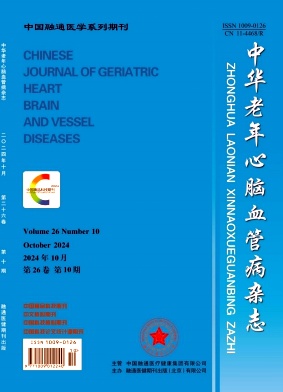Clinical predictive scores for detection of sub-clinical atrial fibrillation after cryptogenic or embolic stroke of undetermined source: A brief systematic review
引用次数: 0
Abstract
Subclinical atrial fibrillation (SAF) is the primary underlying cause of cryptogenic stroke (CS) or embolic stroke of undetermined source (ESUS), particularly in patients over 65 years of age. Therefore, it is strongly recommended screening for SAF in these patients. The development of tools designed to determine the priority of SAF screening is essential for optimizing the diagnostic workup. The aim of our study was to investigate the clinical predictive scores available for SAF detection in patients with CS or ESUS. We gathered data from articles published on the PubMed database from January 1, 2000, to January 31, 2023. Our search yielded eight scores for CS and three for ESUS. SAF diagnosis was established using various methods: 12-lead ECG or 24-h ECG monitoring during 1-year follow-up in three scores; 72-h non-implantable ECG monitoring in two scores; 2 or 3-week non-implantable ECG monitoring in three scores; and implantable ECG monitoring in one score. In two scores, ECG monitoring was performed using a non-implantable and/or implantable loop recorder. Overall, the rate of SAF detection was approximately 6% when using devices for monitoring lasting no more than 72 h and increased to nearly 22% employing 2 or 3-week non-implantable or implantable devices. SAF was defined differently in various scores; five scores considered any episode, even if shorter than 30 s, while six scores required episodes to last at least 30 s. Advanced age was included as a variable in 10 of 11 scores, whereas left atrial enlargement, premature atrial beats, and brain computed tomography characteristics were features in four scores. The area under the curve values of these scores ranged from 0.72 to 0.94. In conclusion, it is still challenging to put the currently available clinical scores to use due to a lack of validation. To provide more comprehensive guidance, it is essential to conduct large prospective multicenter trials in the future.来源不明的隐源性或栓塞性卒中后亚临床房颤检测的临床预测评分:一项简短的系统综述
亚临床心房颤动(SAF)是隐源性卒中(CS)或不明来源栓塞性卒中(ESUS)的主要潜在原因,特别是在65岁以上的患者中。因此,强烈建议对这些患者进行SAF筛查。开发用于确定SAF筛查优先级的工具对于优化诊断工作至关重要。本研究的目的是探讨CS或ESUS患者SAF检测的临床预测评分。我们收集了2000年1月1日至2023年1月31日在PubMed数据库上发表的文章的数据。我们的搜索结果显示,CS为8分,ESUS为3分。采用多种方法建立SAF诊断:3组随访1年12导联心电图或24小时心电图监测;2个评分72h非植入心电图监测;3个评分2周或3周非植入式心电图监测;和植入式心电监护。在两个评分中,使用非植入式和/或植入式环路记录仪进行心电图监测。总的来说,当使用持续监测不超过72小时的设备时,SAF检出率约为6%,使用2或3周的非植入或植入设备时,SAF检出率增加到近22%。不同评分对SAF的定义不同;5分考虑任何情节,即使短于30秒,而6分要求情节持续至少30秒。11个评分中有10个评分将高龄作为变量,而左房扩大、房性早搏和脑计算机断层扫描特征是4个评分的特征。这些分数的曲线下面积值在0.72 ~ 0.94之间。总之,由于缺乏验证,将目前可用的临床评分投入使用仍然具有挑战性。为了提供更全面的指导,未来进行大型前瞻性多中心试验至关重要。
本文章由计算机程序翻译,如有差异,请以英文原文为准。
求助全文
约1分钟内获得全文
求助全文
来源期刊
自引率
0.00%
发文量
7790
期刊介绍:
Chinese Journal of Geriatric Heart Brain and Vessel Diseases (monthly) was founded in 1999. It is a medical professional academic journal published domestically and internationally and is supervised by China Rongtong Medical Health Group Co., Ltd. and sponsored by Rongtong Medical Health Journal Publishing (Beijing) Co., Ltd. It mainly reports on the latest research results and research progress of professional academic hotspots such as clinical diagnosis and treatment of elderly cardiovascular and cerebrovascular diseases. The main columns include expert reviews, guidelines and consensus, guidelines and suggestions, expert forums, meeting minutes, clinical research, basic research, short reports, experience exchange, academic trends, case reports, reviews, and continuing education. Over the years, it has always adhered to the purpose of serving the development of geriatric medicine, so that the journal has been continuously improved and improved in terms of journal quality and academic level, and gradually gained recognition and praise from medical experts.
Chinese Journal of Geriatric Heart Brain and Vessel Diseases is a high-quality Chinese scientific journal, a core journal in the clinical medicine/special medicine category of the 2023 edition of the "Overview of Chinese Core Journals", and a statistical source journal for Chinese scientific papers (Chinese core scientific journals). It is included in the "Compendium of High-Quality Scientific and Technological Journal Classification Catalog" released by the China Association for Science and Technology in 2023, and is included in the World Journal Impact Index (WJCI) report (2023 Science and Technology Edition). It is also included in more than 10 domestic and foreign databases such as the World Health Organization (WHO) and the American Chemical Abstracts.

 求助内容:
求助内容: 应助结果提醒方式:
应助结果提醒方式:


